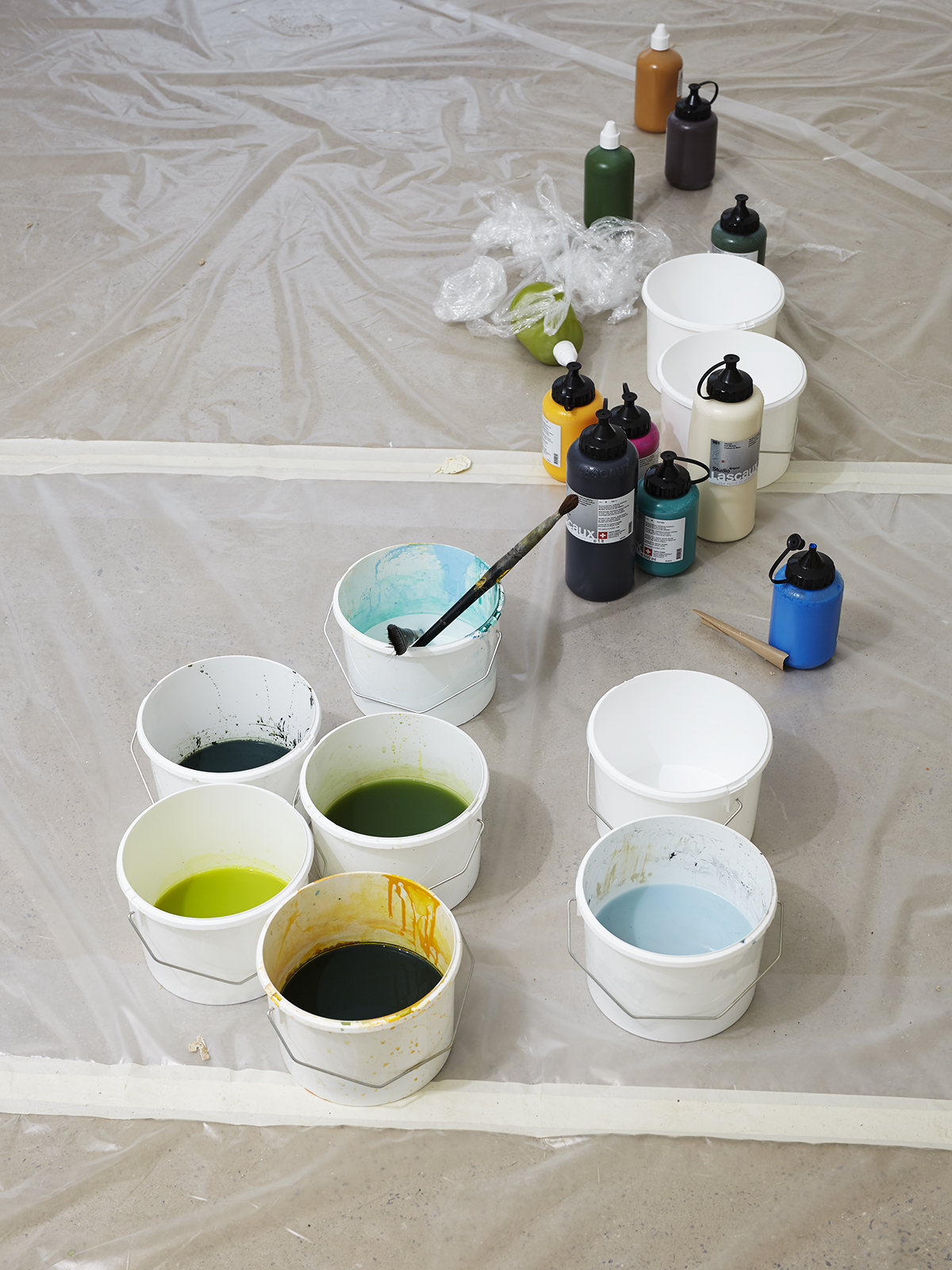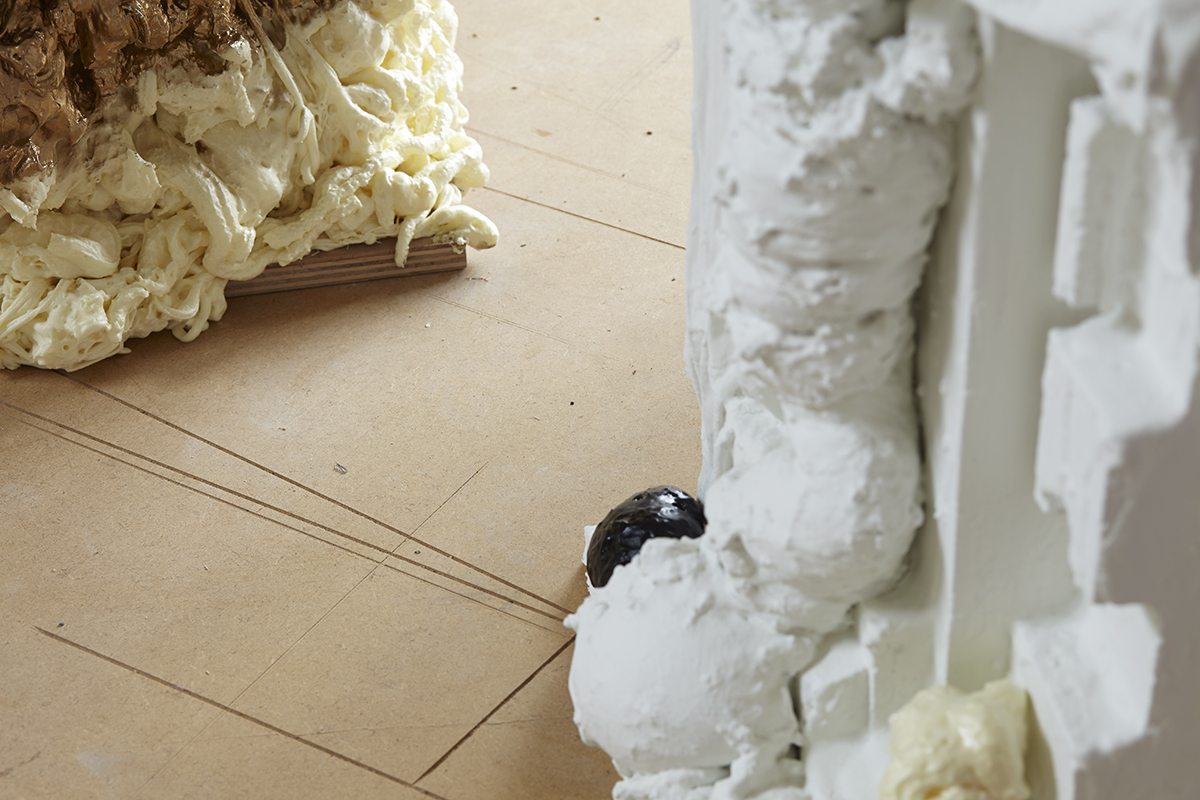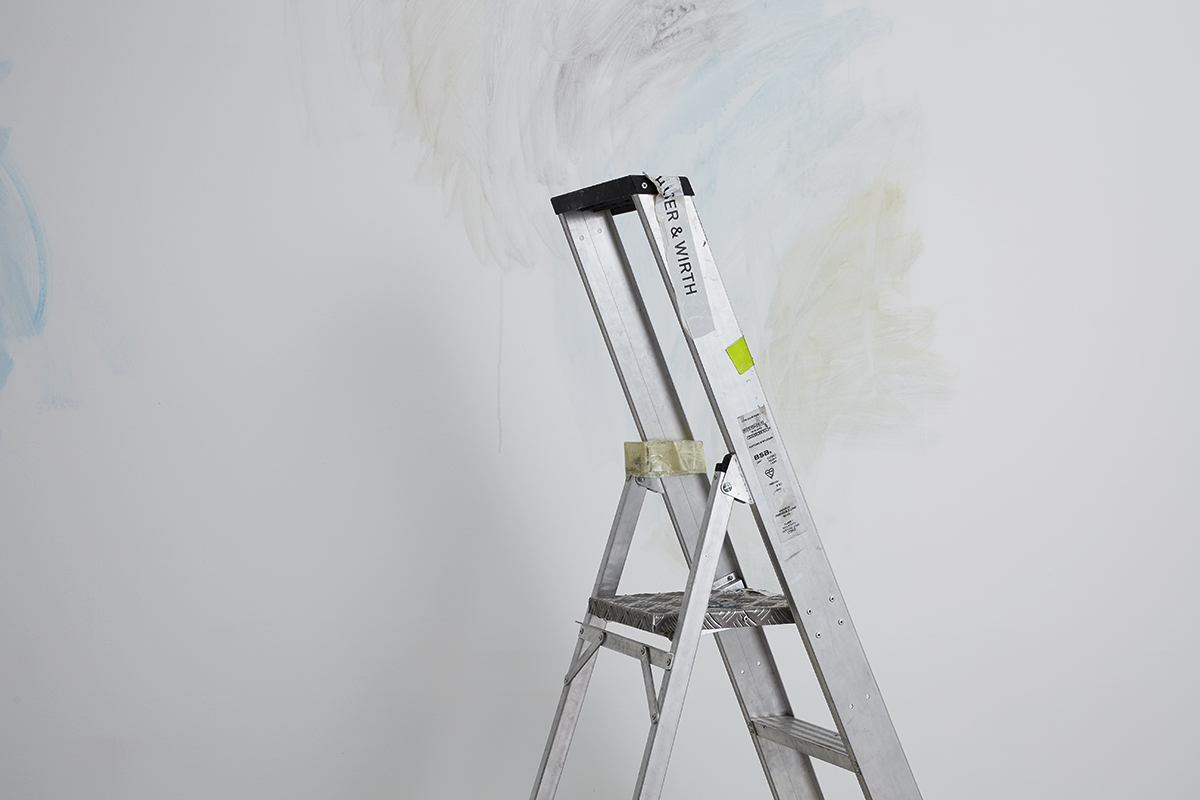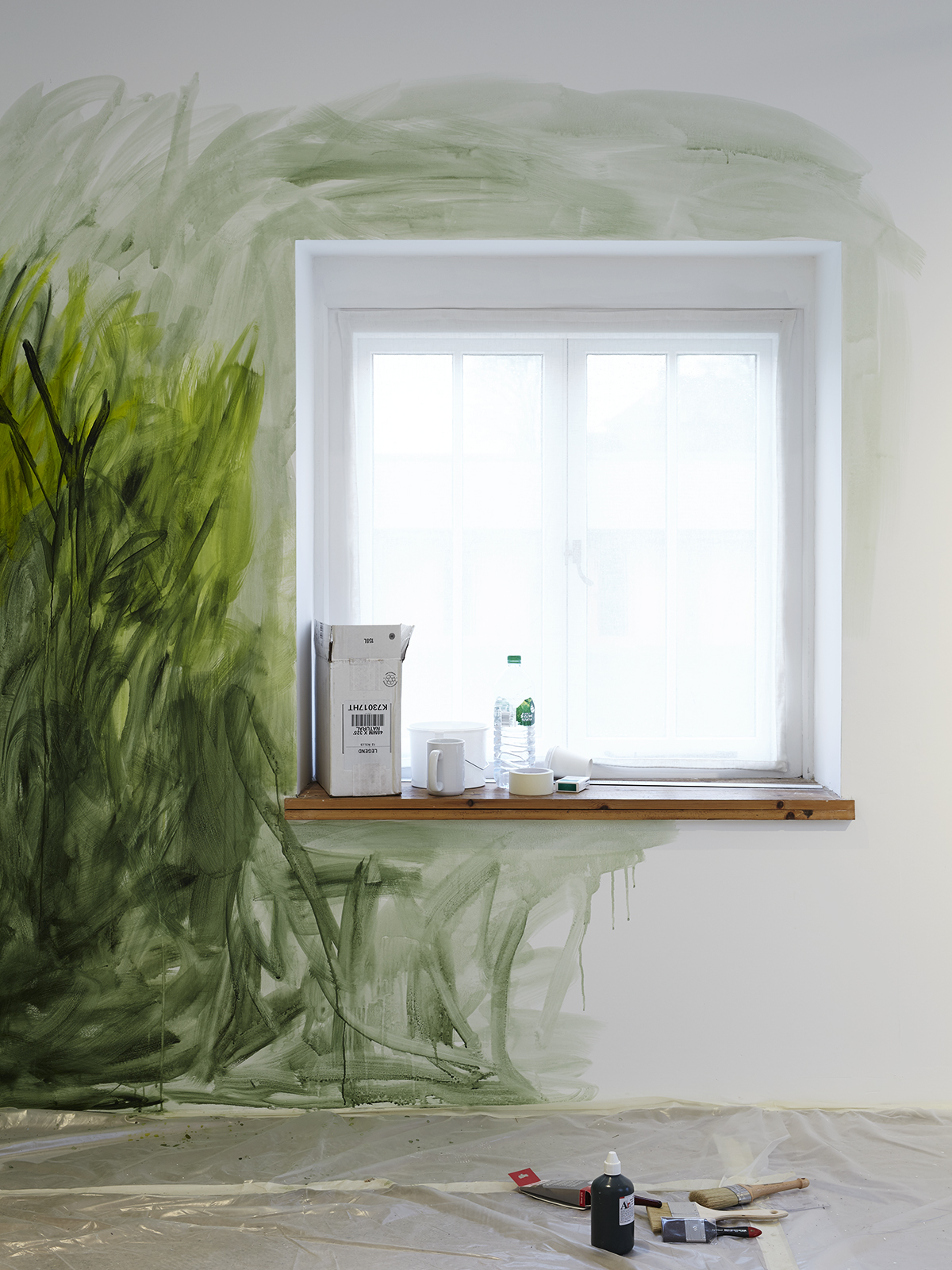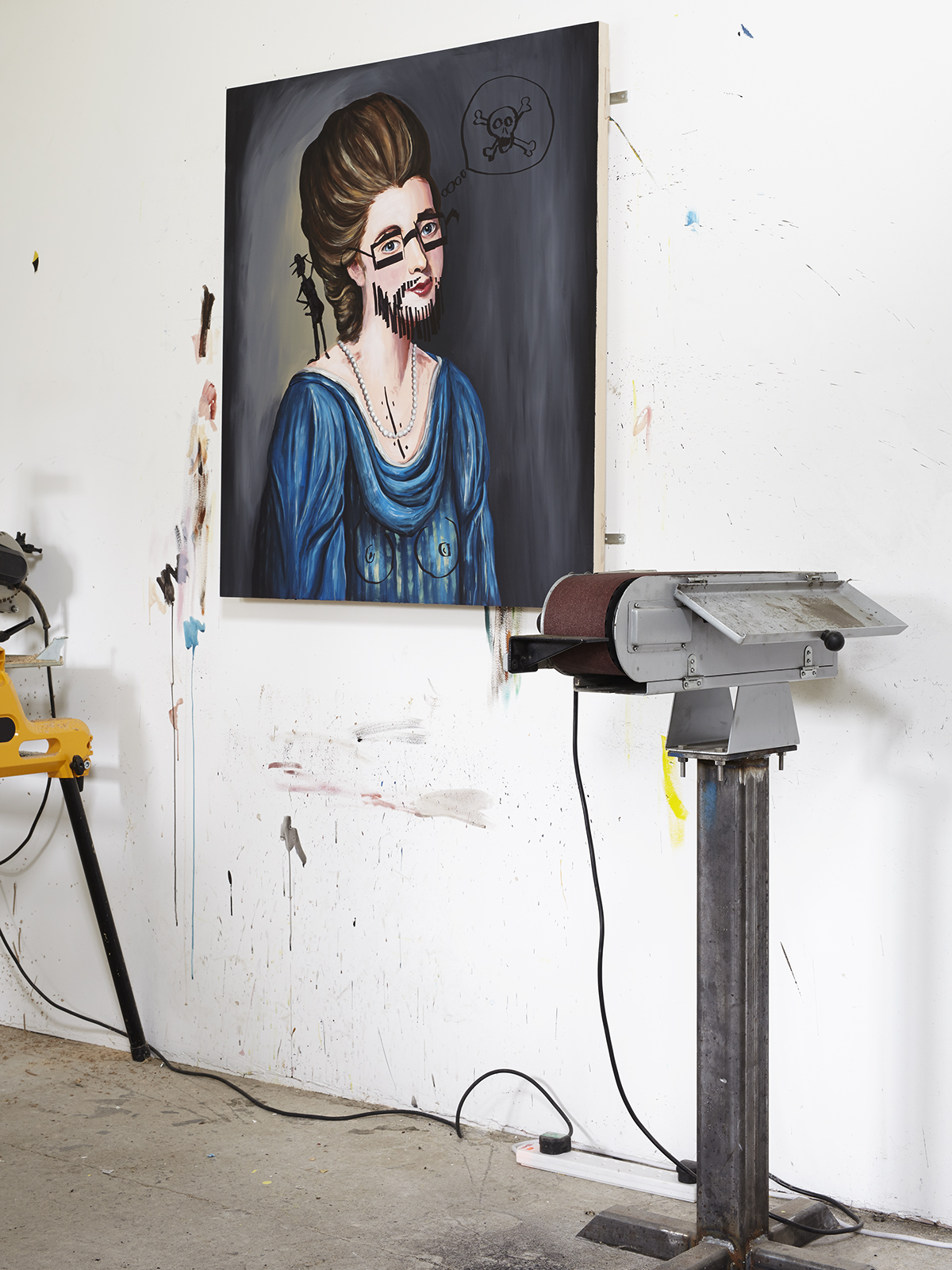
The Somerset hills are soon to be overrun with gnomes, flown over from Serbia especially for the occasion, for Ozbolt’s first solo show at Hauser & Wirth Somerset–he showed in 2015 at the gallery’s New York 69th Street location for More paintings about poets and food and has also shown with the gallery in Zurich and Colnaghi. The artist also hails from Serbia (though he moved to London in the 90s, where he studied at Chelsea, Slade School of Fine Art and the Royal Academy, and continues to practice), and while the gnomes capture many elements that are present in a successful Ozbolt work–humour and a certain lightheartedness–they are also a nod to the ongoing refugee crisis.
The show brings together painting, sculpture and installation with a characteristically wide-ranging pool of reference. The title comes from Aldous Huxley’s 1932 science fiction novel, and the explorations of rituals and varied landscapes mirror the artist’s keen interest in travelling, as well as his collecting of inspiration from a wide range of sources, including art history, the Internet and his raw materials.
We visited the artist at his temporary Somerset studio–the gallery’s The Maltings Studios in Bruton–as he prepared the show and began work on one of his most immersive pieces to date, a full-room installation in the Pigsty gallery.
Did you begin the residency with a strong idea of where this would go, or has it developed quite freely while you’ve been in the studio?
No. I started completely empty-headed. I knew I had a show in Bath [at the Holburne Museum] so there was an idea of how to approach that, which was to respond to the collection they have in the museum and create a dialogue—the Holburne is a local museum that shows British art mostly, there are some old masters, but it’s mainly British painting. So, there was an idea about that show, but not the Hauser & Wirth show. That came after I finished the work for the museum.
How did you decide on the pieces that you wanted to work from in the Holburne Museum’s collection? Was there something you were looking for in particular?
I went quite a few times to the museum just to walk around and then I picked a few paintings that I directly referenced or responded to, and the rest just had the right feel. I made them fit into the collection visually—conceptually they’re different of course. I chose the most famous painting, the Gainsborough, and then a few others that I liked personally.
Did you have quite an open process once you’d selected the pieces? You often talk about having quite a free style of working, was that changed by such set subject matter?
The images I was working on… I quite liked that I had them from the computer. They were quite bad images and my screen was going off every minute, and then at one point I would just leave the images and keep working from memory. There was this one portrait of a woman, Toxic, I left the face to paint last and then I put it down on the floor to start another one and while I was working on the other one I got the idea of pouring the face on with paints and that’s how it ended up having the melted face.
Has your work on The Grand Detour fed into Brave New World?
In a way it has. I created all these completely different kinds of work, visually and conceptually, that were in direct dialogue with the collection [at the Holburne museum]. I think it was then much easier to get into making completely different work again. I started creating these sculptures which were about getting back to the process of making. With my older sculptures, I’d have an idea and then I’d make a model and somebody else would make it if it demanded certain materials. So this was back to art school, making stuff out of things we had in the studio without any ideas—I mean literally, let’s make some art! And it was playful. Then it started developing into more serious stuff. Through working with these found materials we got to a point where I was happy with the look and then we made sculptures specifically for the show. That was great, that was part of the process of working here. Then with the paintings, it was nice to relax from the given idea of responding to the museum collection and get loose again, which is more my style of working. But I also had a space in mind, which I don’t usually have. Because the museum was a precise environment I started thinking about Hauser & Wirth’s space as well. I didn’t create the work for the space, but I had the space in mind.
I find this space can really bring out some of the more sinister elements of work shown—I noticed it especially with Jenny Holzer’s exhibition. Do you find there are parts of your work that are more defined in this space than say, a white cube?
It’s always different when you have a painting in the studio and put it in a different environment. It’s not a tricky space but it’s an unusual space, the first three rooms especially.
You have a lot of gnomes in this show…
Yes, I have a lot of gnomes in this show. I had them in the last show, that’s where it started. They came from Serbia, so they’re like fellow countrymen in search of a better life in the west. The gnomes are not exactly like refugees, but the whole thing of transporting them from one country to another was, in my mind, like refugees coming over. They look weird and out of place, especially in the museum but also here, which was the idea; to have a slightly unusual element to bring to the show.
Do you feel you can recognize roots from Serbia in the work (apart from the gnomes of course)?
I’ve been asked that a couple of times, and I don’t know. I can’t see anything else, maybe someone from Serbia could see it. I lived in England longer than I lived in Serbia and I used to travel religiously. I think that influenced me, seeing all these things and storing them in my memory. It comes out in the work occasionally, different things from different places, more so than Serbia and the Serbian heritage—whatever that might mean.
You’ve said that you don’t like to overthink things when you’re making work. When a work has a more political connotation to it—as with the gnomes and the refugee connection—is it something you’re considering at the time, or do you sometimes make links later on?
It comes in. But I’m quite fast at making work, and the brain is fast while I’m working. It all comes together in the process of working and I don’t sit down and think about the painting before, not much. A lot is subconscious, building onto the original idea. But having said “the original idea”, some of these paintings have two or three paintings underneath that I have repainted and just continued with something completely different. While I’m doing it I’m thinking about it, and then the elements come in. I move away from the work and see what, why and how to an extent. With other works I just let them go. The brain works in mysterious ways, so things can come together on a different level, not always completely intentionally. But it also restricts you in that if you don’t think too much about a painting you end up with lots of singular paintings. The way I work is to just let go and make the work.
Would you say most of your imagery comes from your memory and your imagination or do you collect a lot of images also?
I collect books which I use as references but I do try often to do it from memory. Sometimes I’ll flick through things and try to find something that I think might be suitable. But it’s changed, it’s never traced or copied. I like that it ends up different.
Are there common threads for you in Brave New World, or have these pieces developed quite singularly?
This show is quite eclectic I think. It’s again, my thing in a way, that you have eclectic paintings shown together. So it is one body of work but it might appear as random. The main piece [Brave New World]–the table which is about four metres by two and has seventy or so figures on it–it’s a new territory for me. I’ve done group sculptures but nothing like that, a full installation in the room. In the second room are paintings and sculptures which kind of relate to each other in a way. I was working on them at the same time, literally, at the same time, I’d be working on the sculptures and paintings. I had an idea of directly referencing them but then gave up on the idea, but on some level, they do relate to each other, especially visually.
Do you feel you want to leave a lot to the viewer’s imagination?
I hope so, otherwise, it’s kind of boring. Sometimes my titles explain, in a straightforward way, what it’s about, but I like to think there are layers. It’s a tricky thing. I have a theory that the less you explain the more interesting the work is, but some people demand a booklet with a painting. But figurative work is easier in a way than abstract to get the message across because you can recognise the elements.
You work across a range of mediums, is there any one you feel most comfortable with?
I’m sure I’m seen as a painter more than a sculptor definitely, but I’ve started making more and more things—you can call them sculptures but really they’re things. I enjoy both and it’s different making 3-dimensional things to paintings. They’re not easier but they’re a newer thing for me so they’re more playful.
So the more you know your painting practice do you find it harder to remain instinctive with it?
I don’t know. I produce a lot of paintings, a lot. I still do. In the last two years, I’ve gone through periods where I make other things, like drawings. I get to the point where I feel like I need a short break or something. Having said that, my breaks are usually painting again! It’s quite interesting because I then just literally put a canvas on the wall, pour some paints and start applying paint to the canvas. That’s the break from painting. It’s still painting but it feels like a break. Those works might develop then into a “painting”. What did Lenin say?: Work, work and only work.
Do you feel the show is a clear break in this body of work now? Or will you be continuing afterwards?
I’ll see. I will stop now that’s for sure, but I have a show in Korea and one in Tokyo in a couple of months, in the space of a week they both open. I made some more gnomes for Tokyo, and for Korea–because it’s my first show in Korea I’m presenting myself in a way–I’m going back to my older work. It’ll be quite eclectic with some sculptures as well, as an introduction to Korea. Japan is an extension of this show in a way, a slightly smaller space, but a continuation of this work. It’s my seventh show in Japan and it’s a nice place to show your work.
‘Brave New World‘ runs from 19 January until 7 May 2017 at Hauser & Wirth Somerset. ‘The Grand Detour‘ runs until 5 March at the Holburne Museum, Bath. Photographs © Tim Smyth.

